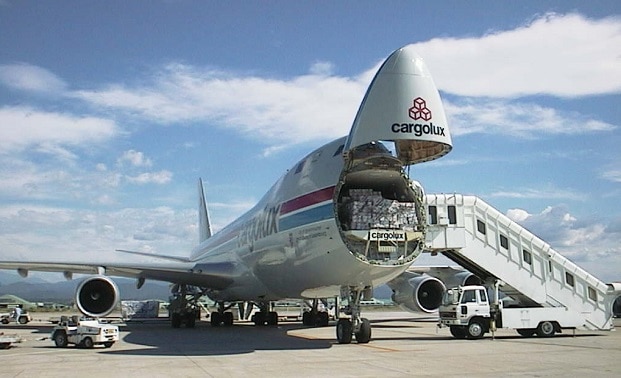
The Planning Inspectorate for the examination of a Development Consent Order application for the Manston airport site will be holding an issue specific hearing on the question of need this Thursday (March 21).
RiverOak Strategic Partners is applying for the DCO in order to purchase the land and create an air freight cargo hub and associated businesses.
However, the land is owned by Stone Hill Park which has submitted a planning application to create up to 3,700 homes, business and leisure and associated infrastructure.
The Planning Inspectorate hearings opened in January and are due to conclude in July.
RSP
RSP say the demand for dedicated freighter capacity is evidenced by the share of bellyhold and dedicated freighters outside the UK being balanced, whereas in the UK bellyhold dominates the market.
An RSP statement of need says the main airport to carry cargo is Heathrow, with around 95% of that in the holds of passenger aircraft, restricting it to the destinations and timetables served by passenger flights. RSP say a focus at Manston on freight rather than passenger flights and significant airport capacity will provide a reliable and attractive service to freight companies.
They state Heathrow and Stansted are focusing on passenger expansion rather than freight with Heathrow expected to phase works over 10 years and add that East Midlands Airport serves a different function and is not in the south east.
The firm also says their case is strengthened by the fact goods are currently trucked through the Channel Tunnel to and from airports in mainland Europe to access dedicated freighter services not conveniently available in the South East.
‘Exploit opportunities’
In documents submitted to the examination RSP says: “As and when the UK leaves the European Union, the demand for both imports from and exports to countries further afield will become ever more urgent and for the UK to be best-placed to exploit such opportunities it should not be restricted to serving cities to which passengers fly or only to exporting and importing goods that can be contained in passenger aircraft.
“The trend towards low-cost carriers (both short-haul and increasingly long-haul) will further reduce the availability of bellyhold cargo as they do not carry it.
“Government policy is expressed as supportive of airports other than Heathrow making best use of their existing runways, indeed that is the title of the June 2018 policy paper on the future of UK aviation, which is what this proposal does. Given the extreme difficulty of bringing forward a new runway in the UK, very serious consideration should be given before this national asset is lost to aviation.”
RSP argue that Manston is ideally located with good road and rail links.
Capacity increase
Using a study by Azimuth RSP says capacity is forecast to increase by 17% to 2035 but leave a shortfall of around nine runways worth of capacity. According to that study, in the UK, non–EU trade accounts for just under half of all trade and 35% of the goods are air freighted . They say both figures could increase following the UK’s withdrawal from the EU.
The statement of need adds: “Forecasts show that by 2050, the value of air cargo lost to London due to capacity constraints would equate to £106 billion per annum with net national losses of around £3.9 billion per annum. The number of dedicated freighter movements that will be unmet by London airports is forecast to be 79,712 with no additional runways, amounting to some 2.1 million tonnes of freight, which would be diverted elsewhere, mainly to Northern European airports, putting huge additional pressure on the road network and Channel crossings
RSP say their proposed development, which would include 19 cargo stands, “would provide almost immediate relief to the pressing situation that is causing £2 billion in potential trade from being lost to the South East each year if it remains without additional runway capacity.”
SHP
Landowner Stone Hill Park says the Azimuth report used by RSP to support its case is flawed and the cargo forecasts are refuted.
An SHP submission says: “RSPs’ case for the DCO is fundamentally based upon the forecasts for the establishment and growth of cargo and passenger flights set out in the Azimuth reports. If the Azimuth reports do not withstand scrutiny, RSPs’ business case, its funding assumptions, its land requirements and the entirety of its DCO application cannot be sustained.
“The Azimuth forecasts are directly refuted on behalf of SHP by York Aviation and Altitude Aviation and (independently) in the reports prepared for Thanet District Council by AviaSolutions. The reports produced by those parties set out their extensive experience in the aviation industry, and the conclusions of each are based on a very detailed evidence base, which contrasts markedly with the limited experience of Azimuth and the unevidenced assertions and speculative arguments contained within the Azimuth report.”
‘No capacity shortage’
SHP say there is no shortage in capacity for freighters, with planned expansions at existing airports comfortably providing sufficient capacity until 2040 and beyond. They point to the third runway and expansion plans at Heathrow and say Manston can only ever play a niche role in the market.
Their submission states: “Heathrow’s function as the primary freight airport was a significant consideration in the Government’s selection of Heathrow over Gatwick for an additional runway. In 2015 Heathrow published its blueprint for a £180 million overhaul of cargo facilities, together with a commitment to double freight capacity to 3.0 million tonnes with the advent of the third runway. Heathrow’s published proposals for its North West runway confirm its commitment to open the runway by 2026. The advent of this substantial uplift in freight capacity fundamentally transforms the market, renders out of date previous references to runway shortage and undermines the Azimuth forecasts.
“Based on the structure of the air freight market and Manston’s challenges – principally location, competitive forces and continuing trend to bellyhold – both York Aviation and Altitude Aviation are clear that a reopened Manston could only serve a niche role, similar to its historic level of operations.”
Decline
SHP say the number of dedicated freighter flights has been in consistent decline since at least 2000 limiting the pool of opportunities for Manston and the trend is a consistent growth in belly hold freight carried on passenger aircraft, a market where Heathrow is dominant. They also question the economic viability of dedicated freight transport, saying: “a tonne of cargo carried in a dedicated freighter aircraft is likely to cost around 4.5 times more per tonne to transport that the same tonne of cargo carried in the belly hold of a passenger aircraft.”
Bellyhold transport means passengers pay for the plane and freight fees only need to cover the additional cost of the extra fuel for the weight.
According to authors of York Aviation report the forecast used by RSP from the Azimuth document are of “ strained credibility.” The SHP statement adds: “Azimuth’s prediction that Manston would handle 5,252 freighter aircraft movements in its first year of operation represents almost 5 times the number ever achieved at the airport at its peak in 2003 and an instant 10 % share of the total freighter market.
“Against a background of decline or flat growth, this could only be achieved through displacement from other freighter airports i.e. East Midlands and Stansted. Both airports, however, are far better located to serve the freight market than Manston, with an established infrastructure of freight forwarders and better transport links.”
They question the level of landing charges that would have to be made to recoup the £300 million RSP plan to invest and how these prices could be competitive compared to established airports.
SHP concludes the evidence used for the RSP case is not credible and say instances such as a stated airline used in the operation list not actually operating freight flights “raise serious doubts about the credibility of the Azimuth forecasts.”
Hearing
The question of need for airport project at Manston will be scrutinised during the hearing which will be held at Discovery Park on Thursday (March 21) at 10am.

